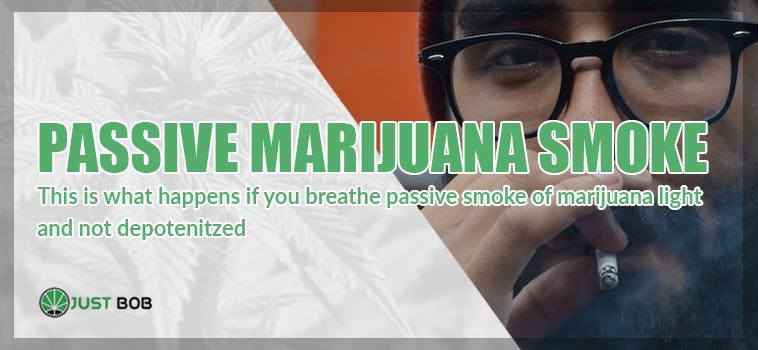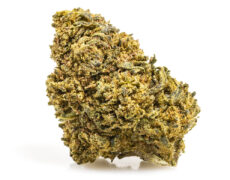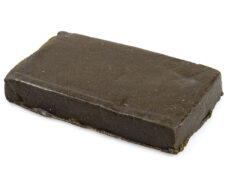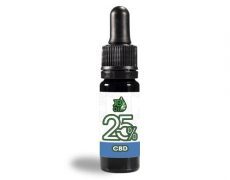Modified on: 11/09/2023
This is what happens if you breathe legal marijuana passive smoke, not weakened
As is known, one of the most widely used methods for consuming hemp is smoking. But what happens if what you breathe is passive smoke from CBD weed or from cannabis that is not weakened? Are the same effects on our body?
Let’s see first of all what are the effects of the two types of marijuana, light and “traditional” and then we find out if passive smoking can be detected by a drug test.
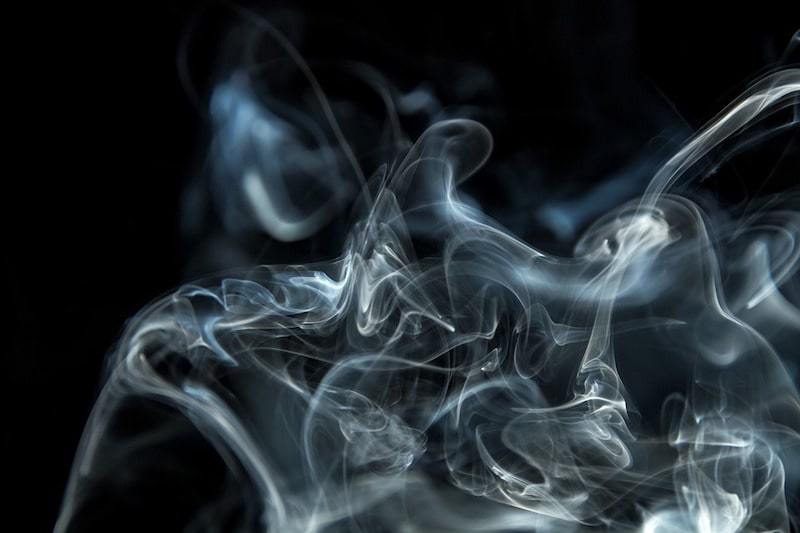

Smoking marijuana: what are the effects?
Due to the high levels of CBD that it contains, legal weed has many beneficial effects. Cannabidiol is in fact a non-psychotropic active ingredient and allows you to:
- relax,
- counteract nausea and vomiting,
- mitigate physical pain,
- keep anxiety and depression symptoms at bay,
- counteract muscle spasms
…And so much more!
Studies on further benefits of cannabidiol are still in progress, and include the action of CBD to counteract hypertension as well as THC and CBD for the fight against cancer. The searches are still few and mostly carried out on the laboratory guinea pigs, but we are very confident about it.
The effects of non-weakened marijuana instead focus more on the psyche: the buzz, euphoria and often lethargy are the distinctive effects of the use of cannabis with THC. Complete the package of dry mouth, “chemical hunger” and sometimes paranoia and anxiety.
All these effects, both in the case of light hemp and in the case of the classic one, can be found when marijuana is ingested and when it is smoked.
But what are the symptoms of passive cane smoke?
Read also: Sublingual CBD oil: what is the difference with other modes of intake?
Effects of passive marijuana smoke (light and not)
If you breathe a lot of passive smoke the damage is the same as the cigarette
- exposure to the risk of lung cancer and other cancers
- greater cardiovascular risk
- persistent cough and strong mucus production
- risk of chronic obstructive pulmonary disease
- asthma
And unfortunately, so much more. Underestimating the diseases to which you expose yourself (passive and active) may cause you major problems.
Yet for the rest nothing to fear: if you breathe the passive smoke of a joint of CBD flowers or of classic marijuana you will have only the smell of grass. Neither stoned nor high in the case of traditional cannabis, nor relaxation and other benefits if it is CBD cannabis.
The smoker’s body absorbs almost all the active ingredients of cannabis. So, unless you are in a marijuana smoking room for hours and hours (maybe you are the lucky employee of a coffee shop!), You can feel comfortable.
Maybe you will have to wait a little before driving and before undergoing blood and urine tests, because despite the absent buzz it is possible that the tests will detect a small concentration of THC.
The reason why some studies tell you about it.
1st study on passive marijuana smoke
Passive cannabis smoke exposure and oral fluid testing, or “Passive exposure to cannabis smoke and oral fluid test“. This is the name of the first study we intend to cite to you, published in 2004 in the Journal of Analytical Toxicology.
During this research, the risk of testing positive fluids due to passive exposure to cannabis smoke was investigated.
In particular, the researchers closed 4 non-marijuana users in a small unventilated and sealed room with an approximate volume of 36 cubic meters. In the room there were also five cannabis smokers, each of whom smoked a joint (containing 1.75% THC).
Smokers consumed cannabis during the first 20 minutes of the study session. All subjects remained in the room for about 4 hours.
To measure the THC level in the body, oral fluid samples were collected and analyzed, as well as three urine and three air samples.
Eight oral fluid samples (collected 20 to 50 minutes after the start of the test) of the 4 passive subjects tested positive for THC at concentrations between 3.6 and 26.4 ng / mL.
Two additional samples of a passive subject, collected at 50 and 65 minutes from the start of the test, contained THC in concentrations of 4.2 and 1.1 ng / mL respectively.
All subsequent samples for passive participants were negative for the remainder of the 4-hour session.
In conclusion, the risk of positive oral fluid tests resulting from the inhalation of secondhand marijuana smoke is limited to a period of approximately 30 minutes after exposure.
Now let’s see the second study.
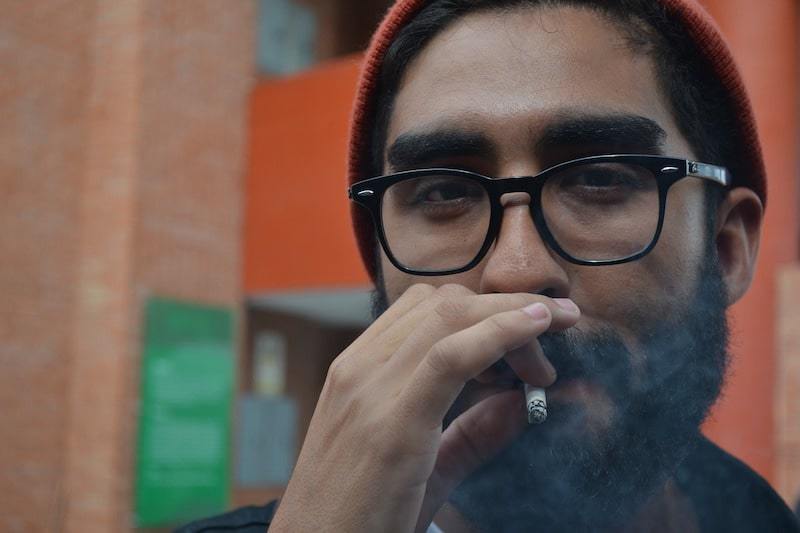

2nd study on passive marijuana smoke
The second study is called Concentrations of delta9-tetrahydrocannabinol and 11-nor-9-carboxytetrahydrocannabinol in blood and urine after passive exposure to Cannabis smoke in a coffee shop. Translated into English “Concentrations of delta9-tetrahydrocannabinol and 11-nor-9-carboxytetrahydrocannabinol in blood and urine after passive exposure to cannabis smoke in a coffee shop”.
The delta9-tetrahydrocannabinol is THC, while 11-nor-9-carboxytetrahydrocannabinol is THC-COOH, a metabolite found in the body after taking THC.
This research, published in 2010 in the Journal of Analytical Toxicology, studies cannabinoid concentrations in blood and urine after passive exposure to cannabis smoking in real life.
8 healthy volunteers were exposed to passive marijuana smoke for 3 hours in a busy coffee shop in the Netherlands. The researchers took a sample of urine from each volunteer before the test began.
They also took blood samples after 1.5, 3.5, 6 and 14 hours after the start of the test, while urine samples were taken after 3.5, 6, 14, 36, 60 and 84 hours from the start of the exposure.
The analyzes carried out on the samples showed that all the volunteers absorbed THC in decidedly modest concentrations.
None of the urine samples produced cut-off values above 25 ng / mL.
After 1.5 and 3.5 hours from exposure, THC values in the blood were near the tolerated limit of the substance, but in blood samples taken after 6 hours the THC was no longer detectable. THC-COOH was detected after 1.5 hours and was still found in 3 of 8 blood samples after 14 hours in concentrations between 0.5 and 1.0 ng / ml.
Do you think that in Italy the urine test gives a positive result only if the concentrations of THC-COOH exceed 50 ng / ml!
Read also: Hemp beer: what is it exactly?
So passive cannabis smoking results in urine and blood?
The tests were conducted on non-legal passive cannabis smoke, therefore with high concentrations of THC: it follows that if you passively breath CBD buds or hashish smoke, very poor in THC, you must have bad luck to be positive in the tests!
As for illegal marijuana it would be better if, after breathing passive smoke for some time, you waited about 6 hours before undergoing blood and urine tests. Oral fluids on the other hand could be positive for THC for about 30 minutes after exposure.
Remember though: passive smoking is bad for your health regardless of THC concentrations!
Sources:
https://www.ncbi.nlm.nih.gov/pubmed/15516313
https://www.ncbi.nlm.nih.gov/pubmed/20465865

